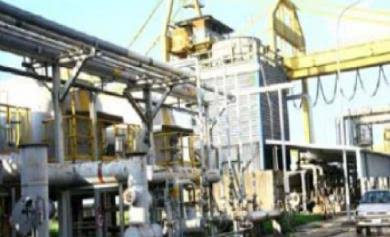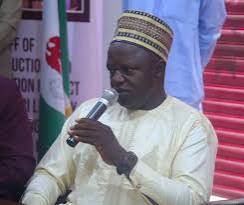On the northern edge of Osogbo, a sprawling complex of rusting sheds and silent conveyor lines sits like a paused heartbeat. Once, furnaces roared here and trailers queued for iron rods that fed bridges, homes, and factories across Nigeria. Today, Osogbo Steel Rolling Company (OSRC) is a mirror held up to a bigger story: how ambitious national infrastructure can wither when policy, finance, and management fall out of sync.
HOW IT BEGAN AND WHY.
Reliably, OSRC was conceived in the 1970s as one of three “Inland Rolling Mills” (the others in Jos and Katsina) to turn locally supplied billets into construction steel. Parliament anchored the plan in the Federal Government Act of 1976; commissioning followed in 1983. The design target for Phase I was 210,000 metric tonnes of iron rods per year, with future phases envisaged to scale output to 420,000 and then 630,000 tonnes and expand employment correspondingly.
The strategic mission was simple and nation-building: integrate Nigeria’s steel value chain (Ajaokuta/Aladja billets into inland rolling mills), conserve foreign exchange by substituting imports, and seed an ecosystem of downstream fabricators and construction jobs.
ECONOMIC REASONS, IMMEDIATE AND FAR.
LOCAL IMPACT (then): In its active years, OSRC was a gravity well for jobs and small business. Beyond direct mill workers, the plant sustained welders, mechanics, block makers, transporters, food vendors, landlords, and traders servicing a factory township built into the complex. With steady billets, output of rebars stabilized prices for builders across the South-West, improving project planning and timelines. (Housing for select workers was part of the original complex design.)
NATIONAL IMPACT: The inland mills were designed to soak up billets from Delta Steel/Aladja and, ultimately, Ajaokuta by turning raw capacity into finished construction steel. At scale, this network would have reduced import dependence, eased pressure on foreign reserves, and created thousands of direct and indirect jobs across logistics, maintenance, and metal fabrication nationwide.
WHAT THE GOVERNMENT STOOD TO GAIN.
INDUSTRIALIZATION DIVIDENDS: Converting domestic iron ore (via Itakpe to Ajaokuta/Aladja) into locally rolled products, exactly the kind of upstream-to-downstream linkages national development plans envisioned.
FISCAL GAINS: Customs relief from lower imports; VAT and company tax from an operating mill and its suppliers; PAYE from a sizable workforce; and state/municipal levies from ancillary enterprises. (Parliamentary records from 2023 still cite the plant’s designed capacity and phased job projections, underscoring the intended fiscal footprint.)
STRATEGIC CAPACITY: A resilient domestic steel base underpins roads, rail, housing, energy, and defense procurement, reducing exposure to global price shocks.
THE PRESENT STATUS, A CAUTIONARY TABLAU
Despite privatization attempts, OSRC has long been moribund. In late 2023, Nigeria’s House of Representatives opened a probe into the plant’s privatization and abandonment, noting that the idle complex has become a security liability and a haven for criminal activity. Local media and lawmakers describe the site as derelict, with critical equipment and buildings deteriorating.
The national system that was meant to feed OSRC faltered too, for example, Ajaokuta has struggled to reach completion, and Aladja/Delta Steel’s fortunes have swung through ownership and operational changes. Without reliable billets and with weak maintenance/financing structures, efficient operational system, OSRC’s economics unraveled.
WAYS OUT FROM, SYMBOL TO SOLUTION.
1. Fix the feedstock first (billet security): A rolling mill is only as viable as its billet pipeline. Government should ring, fence billet supply contracts from functioning melt shops (public or private) with escrowed working capital lines and performance backed offtake guarantees. Where feasible, pair OSRC with a nearby mini-mill (EAF/induction) using scrap and DRI to reduce dependence on distant suppliers.
2. Transparent re-privatization or PPP reset: Implement an open, time-bound PPP with clear KPIs: staged capacity restoration (e.g., 120k to 210k tpa), power reliability milestones, local procurement targets, and worker retraining. Parliamentary oversight already exists; it should be leveraged to publish contracts and quarterly scorecards.
3. Power and Utilities Compact: Steel rolling is energy-intensive. A dedicated embedded power solution (gas or hybrid gas/solar with battery smoothing) and water treatment revamp should be part of the concession obligations, with tariff certainty via regulated bilateral agreements.
4. Asset Integrity and Security Remediation: Commission an independent condition assessment (mechanicals, drives, gearboxes, reheat furnaces, cranes, labs). Salvage, refurbish, or replace with modern mill stands and automation where cheaper than repairs. Simultaneously, secure the perimeter to stop further vandalism since the lawmakers have already flagged security risks.
5. Market anchoring via public works: Tie initial production to federal/state infrastructure programs (roads, housing, rails) with quality assurance to Nigerian/BS standards. Early, predictable orders stabilize cash flow while private demand rebuilds.
6. People and skills: Create a “Steel Skills Bridge” with Nigeria Machine Tools (next door) and technical colleges for multi-month upskilling in maintenance, QA/QC, NDT, and EHS. Prioritize hiring from Osogbo and surrounding LGAs to quickly restore the plant’s local economic halo.
7. Local content & ESG commitments: Publish a local-content plan (spares, refractories, roll regrinding, lab consumables) and an environmental management program for effluents, noise, and dust, aligned with national standards and community reporting.
Bottom line
Osogbo Steel Rolling Company was built to be a dependable workhorse, turning billets into the bars that hold up our homes, schools, and flyovers. The blueprints were credible; the problem was execution and continuity. If Nigeria secures billets, resets governance through a transparent PPP, restores utilities, and ties production to real projects, OSRC can move from symbol of decay to proof of concept, showing that legacy industrial assets can still be reclaimed for growth, jobs, and
national integration.




